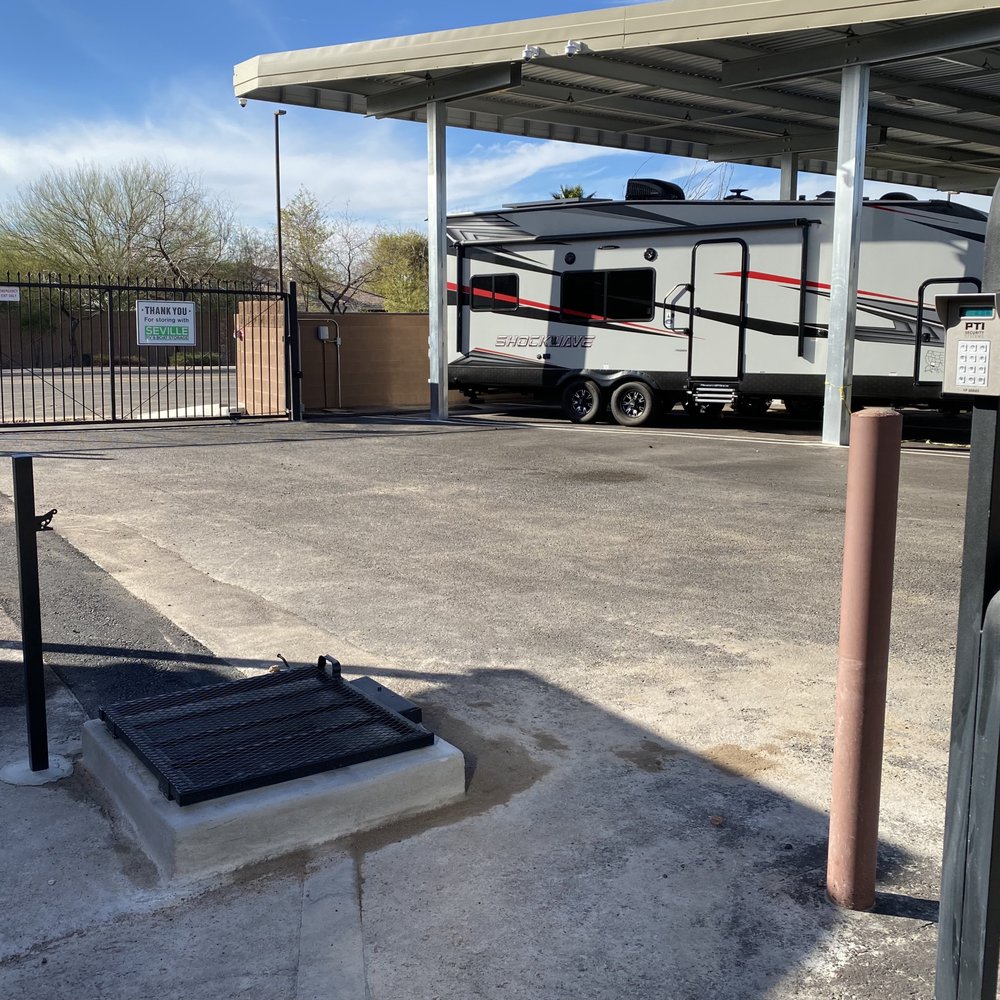When deciding how to store your RV, you may encounter three main options: covered, open, and enclosed storage. Each has distinct benefits and drawbacks suited for different needs. Covered storage provides shelter from overhead conditions like rain and sun, protecting your RV from weather damage. It doesn’t enclose the sides, leaving your vehicle partially exposed.

On the other hand, open storage offers the most basic form of protection, mostly a parking lot setting, which exposes your RV to all elements. This option is usually the most cost-effective, but it offers little protection against weather and debris.
Enclosed storage is the most protective option, fully sheltering your RV from all sides, including the roof. This option offers peace of mind from environmental wear and theft, though it typically comes at a higher cost and may not be necessary for all RV owners, depending on the level of protection they desire. When choosing the best fit for your needs, consider factors like climate, location, and how often you plan to use your RV. RV storage solutions can vary greatly in terms of cost and security, so it’s essential to weigh the benefits of each option. Ultimately, the right choice will provide the protection your vehicle needs while aligning with your budget and usage habits.
Understanding RV Storage Options
When choosing RV storage, it’s important to understand the characteristics of each type. Whether you need protection from weather or easy accessibility, knowing your options will help you make the best choice.
Defining RV Storage Types
There are three main types of RV storage: covered, open, and enclosed. Covered storage provides a roof to shield vehicles from elements such as rain and sun. This option usually includes structures like carports or metal canopies. As the name suggests, open storage doesn’t include a roof, leaving the RV exposed to the weather. It’s often the least expensive option. Enclosed storage involves storing RVs within fully enclosed units, offering the most protection from weather and potential theft.
Comparing Covered, Open, and Enclosed Storage
Covered storage acts as a middle ground by offering some protection from the weather without the high costs of fully enclosed units. Your RV is protected from direct sun, rain, and hail. In covered RV storage, you can expect the price to range from $100 to $250 a month, which is more than open storage but less than enclosed options.
Open storage is simply a parking spot for your vehicle on a surface like gravel or pavement. It can be the most cost-effective but lacks any kind of weather protection. Enclosed RV storage offers the most privacy and security. It isolates the RV from external conditions, making it the priciest choice.
Factors Influencing RV Storage Choices
When selecting an RV storage type, consider the climate where you live. Areas with harsh weather may require more protection than mild climates do. Also, think about how often you plan to use your RV. If you need frequent access, covered or open storage might be more convenient since enclosed storage units are sometimes less accessible.
Finally, budget plays a key role. If cost is a priority, you might lean toward open storage. For added security and protection, you could choose enclosed storage options. Weigh each factor carefully to match your storage needs.
Covered RV Storage
Covered RV storage effectively shields your vehicle from harsh weather while providing a middle ground between open and enclosed storage options. Consider both the benefits and potential drawbacks when deciding if it’s right for you.
Benefits of Covered Storage
Weather Protection: Covered storage provides overhead shelter for your RV. This can help protect your vehicle from rain, snow, and the harmful impacts of the sun’s UV rays, which can damage the exterior. If you live in an area with harsh weather, this type of storage might reduce wear and tear.
Cost Efficiency: Covered options are generally more affordable than fully enclosed storage. They balance cost and protection, making them a practical choice for many RV owners. The overhead covering helps keep the vehicle in good condition without requiring the higher cost of indoor storage.
Moderate Security: While covered storage doesn’t provide the same level of security as enclosed units, it does offer more protection than open lots. It can deter theft and vandalism better than leaving your RV in an entirely exposed area. This adds a layer of peace of mind without the expense of a fully enclosed storage solution.
Potential Drawbacks
Limited Protection: Covered storage doesn’t completely shield your RV from all elements. While the roof prevents direct exposure to weather, side protection is lacking. This can leave your RV vulnerable to wind-driven rain or dust in some conditions.
Security Concerns: Since covered storage is not fully enclosed, it offers less security than other options. While better than open lots, determined individuals may still find ways to access your vehicle. When choosing a facility, it’s important to consider location and additional security measures.
Availability and Location: Depending on where you live, finding a convenient and nearby covered storage facility can be challenging. Some areas may have limited options, forcing you to travel further to store your RV, which can add to the hassle when you want to use it.
Conclusion
Choosing the right RV storage option depends on your needs and budget. Covered storage offers protection from rain and sun, which helps reduce weather-related wear. Enclosed storage completely shelters your RV, providing maximum protection against elements, theft, and vandalism.
Consider your location and weather conditions when making a decision. Open storage is more affordable and suitable for mild climates but exposes your RV to the elements. Evaluate factors like cost, convenience, and the value you place on preserving your RV’s condition.
Your choice will impact your RV’s longevity and maintenance costs. Understanding the differences helps you make a wise decision that fits your storage needs.




